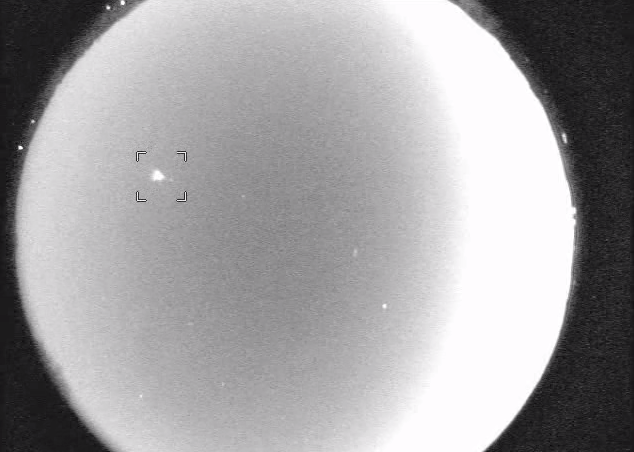Strange Fireballs Light Up February Skies

A strange breed of fireball is streaking through the skies this month, and NASA is urging folks on the ground to take notice.
February's fireballs — a term that describes meteors that appear brighter in the sky than Venus — aren't more numerous than normal, but their appearance and trajectory are odd, experts say.
"These fireballs are particularly slow and penetrating," meteor expert Peter Brown, a physics professor at the University of Western Ontario, said in a statement. "They hit the top of the atmosphere moving slower than 15 kilometers per second [33,500 mph], decelerate rapidly and make it to within 50 kilometers [31 miles] of Earth’s surface."
Beginning February with a bang
The month's fireball action began on Feb. 1, when a meteor lit up the skies over central Texas, putting on a dazzling show for people in the Dallas-Fort Worth area.
"It was brighter and long-lasting than anything I've seen before," said eyewitness Daryn Morran. "The fireball took about eight seconds to cross the sky. I could see the fireball start to slow down; then it exploded like a firecracker artillery shell into several pieces, flickered a few more times and then slowly burned out."
The fireball was about as bright as the full moon, and was spotted by NASA cameras in New Mexico, more than 500 miles (805 km) away. It was likely caused by an object 3 to 6 feet (1 to 2 meters) wide, NASA researchers said. [Fallen Stars: Photos of Famous Meteorites]
Get the Space.com Newsletter
Breaking space news, the latest updates on rocket launches, skywatching events and more!
And the meteors have kept coming, well into February.
"This month, some big space rocks have been hitting Earth's atmosphere," said Bill Cooke of the Meteoroid Environment Office at NASA's Marshall Space Flight Center in Huntsville, Ala. "There have been five or six notable fireballs that might have dropped meteorites around the United States."
Oddball fireballs
So far in February, NASA's All-Sky Fireball Network — which currently consists of six cameras set up in Georgia, Alabama, Tennessee and New Mexico — has photographed about half a dozen of these strange slow-moving, deep-diving fireballs. They have ranged in size from basketballs to buses.
Cooke has analyzed their orbits and determined where the strange meteors are coming from.
"They all hail from the asteroid belt, but not from a single location in the asteroid belt," he said. "There is no common source for these fireballs, which is puzzling."
The "fireballs of February" have puzzled astronomers for decades. Skywatchers first noticed an increase in the number of deep-penetrating, bright meteors during February back in the 1960s and '70s, Brown said.
Research to date has been inconclusive, with some studies reporting a surge of these fireballs in February and others detecting no such trend, Brown added.
But NASA's All-Sky Fireball Network could end up solving the mystery. Cooke and his colleagues plan to keep adding cameras to the network, increasing its coverage across North America.
"The beauty of our smart multi-camera system," Cooke said, "is that it measures orbits almost instantly. We know right away when a fireball flurry is underway — and we can tell where the meteoroids came from."
While Cooke and other researchers ponder the origins of February's fireballs, the rest of us still have a few days left to enjoy them this year.
"If the cows and dogs start raising a ruckus tonight," Cooke said, "go out and take a look."
Follow SPACE.com for the latest in space science and exploration news on Twitter @Spacedotcom and on Facebook.
Join our Space Forums to keep talking space on the latest missions, night sky and more! And if you have a news tip, correction or comment, let us know at: community@space.com.

Space.com is the premier source of space exploration, innovation and astronomy news, chronicling (and celebrating) humanity's ongoing expansion across the final frontier. Originally founded in 1999, Space.com is, and always has been, the passion of writers and editors who are space fans and also trained journalists. Our current news team consists of Editor-in-Chief Tariq Malik; Editor Hanneke Weitering, Senior Space Writer Mike Wall; Senior Writer Meghan Bartels; Senior Writer Chelsea Gohd, Senior Writer Tereza Pultarova and Staff Writer Alexander Cox, focusing on e-commerce. Senior Producer Steve Spaleta oversees our space videos, with Diana Whitcroft as our Social Media Editor.